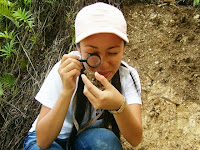 |
| Antibodies Attack Cancer Cell |
Your body’s immune system protects you against bad germs (called ANTIGENS) every day. In most cases, the immune system
does a great job of keeping people healthy but
sometimes problems can lead to illness and infection.
The immune system includes cells, tissues,
and organs that work together to protect the body. The cells involved are white
blood cells (called LEUKOCYTES), which seek out and destroy the antigens. During this process, the white blood cells
produce special proteins (called ANTIBODIES) to fight the antigens.

Once produced, antibodies continue to
exist in a person's body, so that if the same antigen is presented to the
immune system again, the antibodies are already there to do their job. So if
someone gets sick with a certain disease, like chickenpox, that person
typically doesn't get sick from it again.
This is also how immunizations prevent diseases. An
immunization introduces the body to an antigen in a way that doesn't make
someone sick, but does allow the body to produce antibodies that will then
protect the person from future attack by the germ or substance that produces
that particular disease.
Your body – an amazing creation!
Checkout this video to learn more about your immune system
and ways to stay healthy!
Do some research and EARN A REWARD!
Students in Alabama are typically required to have the following immunizations before entering school:
- Diptheria
- Tetanus
- Pertussis
- Polio
- Mumps
- Rubella
- Measles
- Varicella
Pick any two of the diseases listed above. Do some research on each of the two diseases you select to find out the following:
- What is the Cause of the Disease? (how do you get the disease?)
- What are the Symptoms of the Disease?
- What is the Treatment if you have the Disease?
Record your answers on paper and turn in to Mrs D by class on Friday, 15 March to EARN A REWARD!!























